 |
|
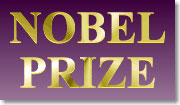 |
Nobel Prize Graphic
Credit: NSF |
Statement by NSF Acting Director Arden Bement on Nobel Prizes in Science and
NSF Connections
I am pleased to congratulate this year's Nobel laureates in science for their
much-deserved recognition. On behalf of the American public, the National Science
Foundation (NSF) takes great pride in the remarkable achievements of this year's
laureates who have been supported by NSF grants throughout their careers. Of
the 10 2004 Nobelists in science, six were supported by NSF at some time in their
careers. The Economics laureates, Finn Kydland and Edward Prescott, received
the prize for work funded by NSF.
More...
(posted October 13, 2004)
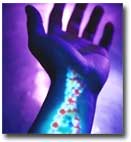 |
NIH-NSF to Convene Interagency Conference on Bridging
the Life and Physical Sciences
The National Institutes of Health and the National Science Foundation are convening
the conference, "Research at the Interface of the Life and Physical Sciences:
Bridging the Sciences," on Nov. 9, 2004, at the Natcher Conference Center
on the main NIH campus in Bethesda, Md. The objectives of the conference are
to identify opportunities, grand challenges, and issues at the interface of the
life and physical sciences that could result in major advances and to develop
approaches for bridging these traditionally separate fields.
More...
(posted October 13, 2004)

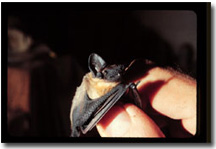 |
Adult Neoplatymops mattogrossensis (New World flat-headed bat) from Northeast Brazil.
Credit: M.R. Willig, NSF
|
Ecology of Infectious Diseases Grants Awarded by National Science Foundation, National Institutes of Health
The National Science Foundation (NSF) and the National Institutes of Health (NIH) have announced funding for six projects under the Ecology of Infectious Diseases (EID) program, the fifth year of funding in this multi-year effort. The joint program supports efforts to understand the ecological and biological mechanisms that govern relationships between human-induced environmental changes and the emergence and transmission of infectious diseases. Interdisciplinary projects funded through the EID program will study how large-scale environmental events—such as habitat destruction, biological invasion and pollution—alter the risks of viral, parasitic and bacterial diseases emerging in humans and animals.
More...
(posted September 30, 2004)

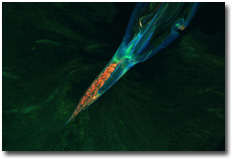 |
Autofluorescence of Tick Nymph on a Mammalian Host
Credit: Marna E. Ericson, University of Minnesota
|
NSF, AAAS Announce Winners of 2004 Visualization Contest
Judges have named 11 winners in the 2004 International Science & Engineering Visualization Challenge, an annual international competition created to recognize outstanding achievement in use of graphics media to illustrate research processes and results. The contest is jointly sponsored by the National Science Foundation and the journal Science, published by the American Association for the Advancement of Science. Winning entries in this year's competition span research fields from viral medicine to Earth science and span the globe from Germany to Seattle. They are published in the Sept. 24 issue of Science and in the journal's electronic edition "Science Online.”
View 2004 results
Read Full Story
(posted September 30, 2004)

National Science Foundation Awards $9.7 Million to Pittsburgh Supercomputing Center for Cray System—Red Storm to Blow into Pittsburgh at the End of 2004
 |
An artist's rendering of the new Red Storm system to be installed by Cray, Inc., at the Pittsburgh Supercomputing Center.
Credit: Cray, Inc.
|
The U.S. academic community will soon have access to a new supercomputer modeled
on the highest-performance systems currently being built in the United States,
through a $9.7 million award to the Pittsburgh Supercomputing Center (PSC) announced
on Sept. 29 by the National Science Foundation (NSF). The one-year
award will allow PSC to install a Red Storm system from Cray, Inc., capable of
approximately 10 teraflops — 10
trillion calculations per second. The Pittsburgh system will be similar to the
Red Storm systems currently being installed at the Department of Energy's Sandia
and Oak Ridge national laboratories. The system to be installed at PSC at the
end of 2004 potentially will provide the basis for greatly expanded capability
in the future.
More...
(posted September 30, 2004)

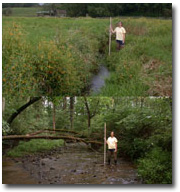 |
Deforested reaches of 16 small Piedmont streams such as Birch Run in Pennsylvania (upper photo) are shown to have much narrower channels than forested reaches located immediately upstream or downstream (lower photo). The channel narrowing results in less stream habitat and ecosystem per unit length of stream and compromises in-stream ecosystem services such as the processing of pollutants.
Credit: David H. Funk
|
Research Uncovers Added Value of Streamside Forests—Studies demonstrate that trees keep pollutants out of streams, help process pollutants in them
A team of researchers led by scientists from the Stroud Water Research Center in Avondale, Pa., has discovered that streamside (or riparian) forests play a critical – and previously unacknowledged – role in protecting the world’s fresh water. Their findings, funded jointly by the National Science Foundation and Environmental Protection Agency and published online the week of September 13, 2004, in the Proceedings of the National Academy of Sciences, have significant implications for a world that is facing a huge and growing freshwater crisis, in which 20 percent of the world population lacks access to clean drinking water and more than 2.2 million people die each year from diseases transmitted by contaminated drinking water and poor sanitation.
More
(posted September 30, 2004)

Recent NSF Headlines
Complete
list of current headlines. |
 |

